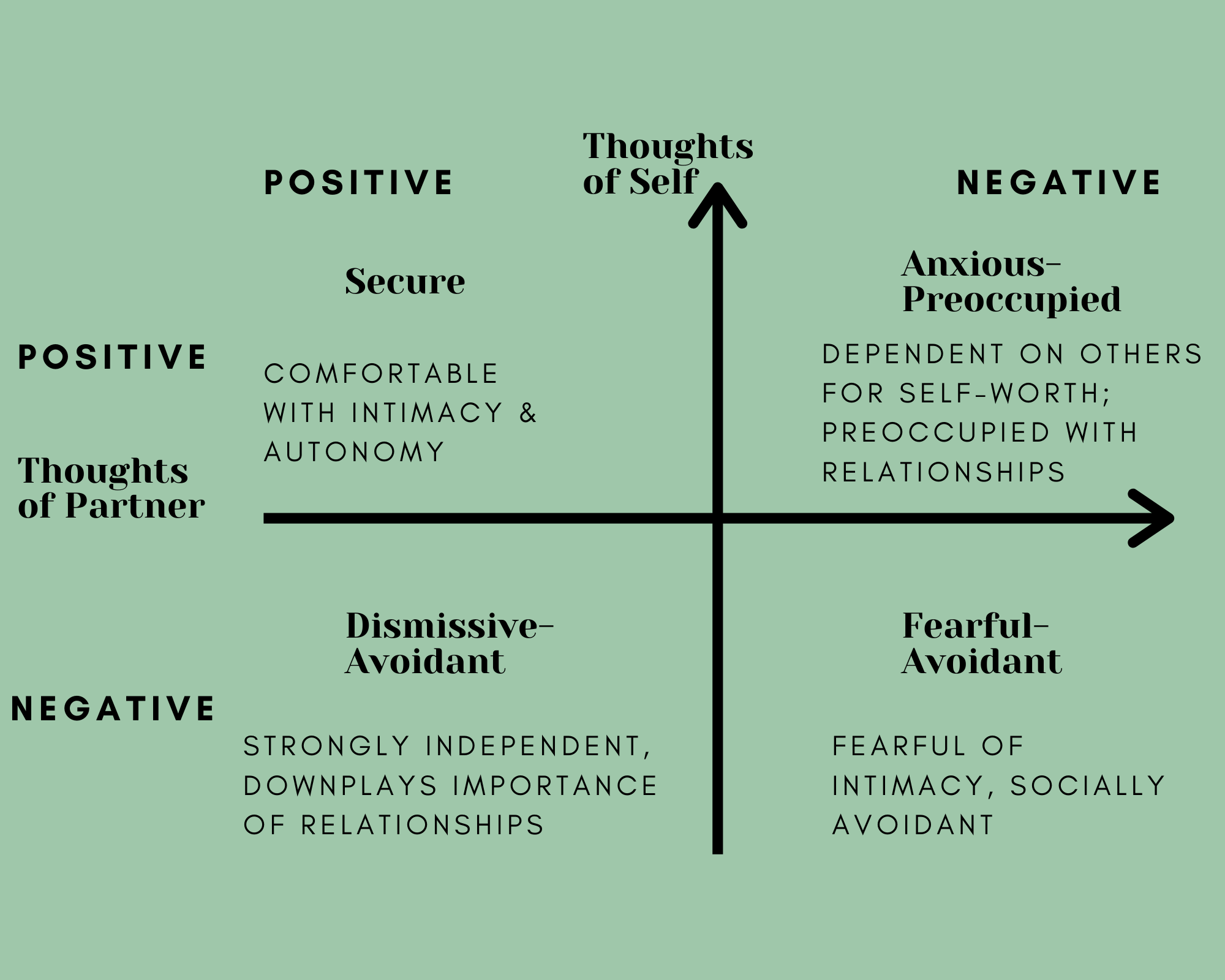What Your Attachment Style Means For Your Friendships And Relationships
Have you ever been told that you have “a type?” If you analyzed past relationships, could you identify recurring themes? Now, take a closer look at your friendships. Do you choose the “same” friends? Do these friends date back to childhood or do you find yourself continually making new friendships and abandoning older ones? Do you ever find yourself anxious when a friend doesn’t text you back immediately? Are you upset when someone cancels plans last minute?
These feelings and insecurities are rooted in attachment theory. In fact, how you behave as an adult in both intimate relationships and friendships can be linked to your childhood. According to research by John Bowlby, a child’s early interactions with its parents or caregivers result in an expectation for how quickly its needs would be met.
As the child grows older, these interactions and thoughts surrounding their caregivers combine with the child’s own perception of self and their worthiness of love and care. Over time, children begin to develop working models of attachment, which act as a blueprint for what to expect from other people and how to respond. As we mature into adulthood, we carry these attachment styles with us.
This subconscious programming affects everything from the friends we choose to our romantic partners. It can also play a large role in ultimately how successful (or not) these relationships can be. This is why identifying your unique attachment style can allow you to understand your strengths and weaknesses when it pertains to creating lasting bonds.
According to psychologists Bartholomew and Horowitz, adults can exhibit attachment behaviors, based on two parts: how they see themselves and how they view others. These thoughts can be further narrowed into positive or negative thoughts, thus creating four distinct attachment types. Many people, however, may find that they fall into more than one category.
How Your Attachment Style Affects Your Relationships
Secure Attachment
“We’re a team.”
Children who form a secure attachment with their parent see them as safe. A child who feels safe may feel confident enough to venture out from its parent while playing or explore with other children. In adults, a securely attached partner may be quick to comfort an upset partner or ask for comfort themselves. These partners tend to be more open, honest, and independent. They show love by reaching out to connect with others, but also drawing and respecting reasonable boundaries. Securely attached partners enjoy spending time with their partners, but also enjoy alone time. In fact, both extroverts and introverts can exhibit secure attachment.
These individuals also tend to have a more positive view of themselves as well as others. This allows them to be comfortable in social settings as well as individual. This is also the largest attachment type, which just over half of the population (58%) classified as secure.
Anxious Preoccupied
“I knew they were going to leave me.”
These individuals tend to be more likely to reach out to friends to seek closeness and validation and struggle being alone. They place a high level of self-worth on their friendships and require constant attention to feel secure and accepted. In a romantic relationship, they might be looking for their partner to “rescue” them. While they crave safety and security in their relationship, they may constantly sabotage this ideal by creating both real and imaginary conflict in the relationship.
Those who exhibit an anxious attachment may be needy, possessive, jealous, or controlling. They also have a history of tumultuous relationships. Many times they are reluctant to give people the benefit of the doubt, as their negative thoughts of self are projected on others’ thoughts and actions.
As a child, these individuals may have developed this attachment style from a parent who was not consistent in caring, sometimes nurturing and other times emotionally unavailable, causing the child to seek an unattainable level of approval.
Dismissive Avoidant
“Don’t get too attached, you’ll just be disappointed.”
People with a dismissive avoidant attachment type are highly self-sufficient, often seeking isolation and emotionally distancing themselves from their partner. Children develop this dismissive avoidant attachment type as a response to lack of closeness with a parent, thus protecting themselves from being hurt or rejected.
In friendships, this attachment type may be reserved and may have many acquaintances, but few close friendships. They may be quick to isolate themselves and do not crave social interaction. Work and personal projects may be put ahead of friendships or emotional relationships as a way of avoiding true intimacy.
When a dismissive avoidant does enter into a relationship, they may enjoy spending time with their partner but feel anxious when they become too close. They are able to emotionally disconnect from their feelings—in a stressful situation, a common response would be: “I don’t care.” They may portray high self-esteem and be mildly narcissistic, but this is generally a defense mechanism for a fragile self and feelings of self-hatred.
Fearful Avoidant
“Come Here. No, Go Away.”
Due to a negative view of self and the world around them, individuals who exhibit the fearful avoidant attachment style both crave and resist relationships. These individuals frequently find themselves bouncing between highs and lows in both relationships and friendships.
They fear being isolated from others, but also push people away and are inherently suspicious. They may start fights or create conflict, but fear rejection. They have few close friends. They may experience “emotional storms” or be unpredictable in their moods.
As a child, they may have had challenging life experiences or an abusive parent. The key emotion is fear. When seeking comfort, the child may reach out to a hostile or emotionally distant parent, who is unable to soothe and meet their child’s needs. As a result, this may increase anxiety for the child and lead to the emotional confusion as an adult.
Can I Change my Attachment Type?
The good news is that attachment types can change over time. While these types are a working model developed in childhood, these models can be adjusted by life experiences as an adult. For example, being in a loving relationship with a secure attachment type can positively increase an anxious type. However, this scale goes both ways and secure types can find themselves developing anxious or avoidant qualities.
By referencing the diagram at the beginning of the post, you can begin to identify areas of your life that you would like to work on. For example, an anxious type could work to overcome negative self-image by journaling. Avoidant types can work towards developing long-lasting, meaningful friendships. Finding a therapist is also helpful to allow you work through and address these issues and patterns.
Try a free week of affordable, private therapy with BetterHelp
By simply identifying your attachment type, you’ve already taken a big step in your ability to understand and communicate with friends or partners. You are challenging past insecurities and trauma and can start on the path to creating new satisfying relationships both with yourself and others.
Suggested Reading:
Image: Amazon
Attached: The New Science of Adult Attachment
Amir Levine, M.D. & Rachel S. F. heller, M.A.
Image: Amazon
The Attachment Theory Workbook
Annie Chen, LMFT
Image: Amazon
The Power Of Attachment
Diane Poole Heller, PhD
Image: Amazon
A General Theory Of Love
Thomas Lewis, M.d., Fari Amini, M.D., Richard Lannon, M.D.
Image: Amazon
If you’re interested in discovering your attachment type, try this quiz!











